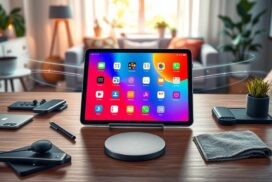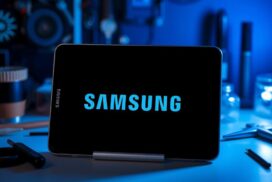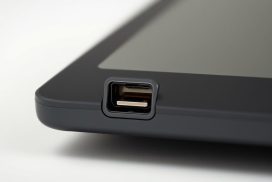How to Solve Tablet’s Slow Internet Speeds
Tablets are convenient devices for browsing the internet, but they can sometimes suffer from slow internet speeds. There are several factors that can contribute to this issue, such as limited storage, outdated software, specific apps, or a slow internet connection. To solve your tablet’s slow internet speeds, there are a few steps you can take, including troubleshooting your Wi-Fi connection, restarting your tablet, updating your software and apps, closing unnecessary apps, adjusting app settings, lowering video resolutions, and organizing your home screen. By following these tips, you can improve the speed of your tablet’s internet connection and enjoy seamless browsing in the UK.
Troubleshooting Your Wi-Fi Connection
One of the first things to check when experiencing slow internet speeds on your tablet is your Wi-Fi connection. A poor Wi-Fi connection can significantly affect the speed and performance of your tablet’s internet.
To troubleshoot your Wi-Fi connection, here are some steps you can take:
- Turn off and on the Wi-Fi: Sometimes, simply turning off and on the Wi-Fi on your tablet can resolve connectivity issues. Go to your tablet’s Settings, find the Wi-Fi option, and toggle it off and on.
- Test your tablet’s performance with cellular service: If you have a cellular data plan on your tablet, you can temporarily switch to cellular service to see if there’s a difference in internet speed. This will help you determine if the issue lies with your Wi-Fi connection or your tablet itself.
- Check for Wi-Fi network issues: Check if there are any issues with your Wi-Fi network that could be causing slow internet speeds. This includes checking for network congestion, as multiple devices using the Wi-Fi at the same time can slow it down. Additionally, ensure that your tablet is within range of your Wi-Fi router and that there are no physical obstacles obstructing the signal.
- Consider upgrading your internet plan or extending your Wi-Fi range: If you consistently experience slow Wi-Fi speeds on your tablet, it may be worth considering upgrading your internet plan or investing in Wi-Fi range extenders. This can help improve the overall performance of your Wi-Fi network and provide faster speeds to your tablet.
With these troubleshooting steps, you can identify and resolve Wi-Fi connection issues that are causing slow internet speeds on your tablet. By ensuring a stable and strong Wi-Fi connection, you can enjoy a seamless browsing experience and improve your tablet’s performance.
Restarting Your Tablet
One simple and effective solution for improving your tablet’s performance is to restart it. This helps to close any running programs, clear out glitches or cached data, and give your tablet a fresh start. Restarting your tablet can significantly enhance its overall speed and responsiveness. To restart your tablet, follow these steps:
- Press and hold the power button on your tablet.
- Simultaneously press and hold the volume down button.
- Wait for the screen to go black.
- Release both buttons.
- Finally, press the power button again to turn on your tablet.
If the first attempt doesn’t work, you can try holding the power button for a longer duration until the screen goes dark. This manual restart procedure is an effective way to resolve any software-related issues and boost your tablet’s performance. By implementing this simple step, you can experience noticeable improvements in your tablet’s speed and functionality.
Updating Your Software and Apps
Outdated software on your tablet can contribute to slow internet speeds. It’s important to keep your tablet’s software up to date to ensure optimal performance. By regularly updating the software on your tablet, you can benefit from the latest bug fixes, security patches, and performance enhancements.
To check for software updates, follow these simple steps:
- Open the settings menu on your tablet.
- Navigate to the “Software Update” or “System Update” section.
- Tap on the “Check for Updates” option.
- If an update is available, follow the prompts to download and install it.
Updating your apps is equally important. App updates often include bug fixes, performance improvements, and new features that can enhance your tablet’s functionality and user experience. To update your apps from the Google Play Store:
- Open the Google Play Store app on your tablet.
- Tap on the three horizontal lines in the top-left corner to open the menu.
- Select “My apps & games” from the menu.
- Tap the “Update” button next to each app that has an available update.
By regularly updating your software and apps, you can improve the performance of your tablet, fix any software-related issues, and ensure compatibility with the latest technologies and features. Don’t delay, update today!
Benefits of Keeping Your Software and Apps Up to Date:
1. Enhanced security: Software and app updates often include important security patches that protect your tablet from vulnerabilities and potential threats.
2. Improved performance: Updates can optimize your tablet’s performance, making it faster, more responsive, and less prone to crashes or freezes.
3. New features and functionality: Updates can introduce exciting new features and functionality to your tablet, enhancing your overall user experience.
4. Bug fixes: Updates address known issues and bugs, resolving software-related problems that may be affecting your tablet’s performance or causing internet connectivity issues.
5. Compatibility with new technologies: By updating your software and apps, you ensure that your tablet remains compatible with the latest technologies, apps, and services.
Closing Apps and Adjusting Settings
Running multiple apps simultaneously on your tablet can strain its performance and slow down the internet connection. To optimize your tablet’s performance and internet speed, it’s important to manage your apps effectively and adjust their settings.
App Management
One way to improve your tablet’s performance is by closing apps that you’re not currently using. When apps run in the background, they consume system resources and can impact your tablet’s speed. To close apps:
- On Android:
- Swipe up from the bottom of the screen to access the recent apps menu.
- Swipe left or right to find the app you want to close.
- Swipe the app card upwards or tap the close button to close it.
- Double-click the home button to access the app switcher.
- Swipe left or right to find the app you want to close.
- Swipe the app card upwards or tap the close button to close it.
In addition to closing apps, you can also consider deleting unnecessary apps from your tablet. This can free up storage space and improve overall performance.
App Settings
Adjusting the settings of specific apps can help minimize their power usage and reduce their impact on your tablet’s performance. Here are a few settings you can optimize:
“By adjusting the settings of specific apps, you can optimize your tablet’s performance and internet speed.”
| App | Optimization Settings |
|---|---|
| Disable autoplaying videos and reduce the frequency of notifications to save power and bandwidth. | |
| Disable autoplaying videos and reduce the frequency of notifications to save power and data usage. | |
| YouTube | Lower video resolution or enable “Wi-Fi only” playback to reduce data consumption. |
By managing your apps and adjusting their settings, you can optimize your tablet’s performance, minimize power usage, and improve your internet speed.
Conclusion
Slow internet speeds on your tablet can be frustrating, but there are several solutions available to improve your tablet’s performance and internet speed. By troubleshooting your Wi-Fi connection, restarting your tablet, updating your software and apps, closing unnecessary apps, and adjusting app settings, you can optimize your tablet’s internet speed and enjoy a seamless browsing experience in the UK.
If you have followed these troubleshooting tips and still find that your tablet’s speed is not improving, it may be worth considering investing in a new tablet with better performance capabilities. Newer tablets often offer faster internet speeds and improved overall performance, allowing you to enjoy a smooth browsing experience without any lags or delays.
Remember, taking proactive steps to address slow internet speeds on your tablet can significantly enhance your browsing experience and maximize productivity. By implementing these tablet internet speed solutions and troubleshooting tips, you can ensure that your device performs at its best, providing you with faster internet speeds and a more enjoyable online experience.
FAQ
How can I solve my tablet’s slow internet speeds?
There are several steps you can take to improve your tablet’s internet speed. These include troubleshooting your Wi-Fi connection, restarting your tablet, updating your software and apps, closing unnecessary apps, and adjusting app settings.
How do I troubleshoot my tablet’s Wi-Fi connection?
To troubleshoot your Wi-Fi connection, you can try turning off and on the Wi-Fi, testing your tablet’s performance with cellular service, and checking for any issues with your Wi-Fi network, such as congestion or signal strength. Upgrading your internet plan or extending your Wi-Fi range may also help.
How do I restart my tablet?
To restart your tablet, press and hold the power button and volume down button, wait for the screen to go black, and then turn on the tablet again. If this doesn’t work, try holding the power button for a longer duration until the screen goes dark.
How do I update the software and apps on my tablet?
To update your tablet’s software, go to the settings of your tablet and check for software updates. Follow the prompts to get the update started. Additionally, update your apps from the Google Play Store to improve performance and fix software-related issues.
How do I close apps and adjust settings on my tablet?
To close apps that you’re not using, simply swipe them off the screen or use the recent apps button to close them. Deleting unnecessary apps from your tablet can also help. To adjust app settings, go to the settings menu of your tablet, select the app you want to adjust, and make changes to minimize power usage and improve performance.
What should I do if I’ve tried all these tips and still can’t improve my tablet’s speed?
If you’ve followed all the troubleshooting tips and still can’t improve your tablet’s speed, it may be time to consider investing in a new tablet with better performance capabilities.











